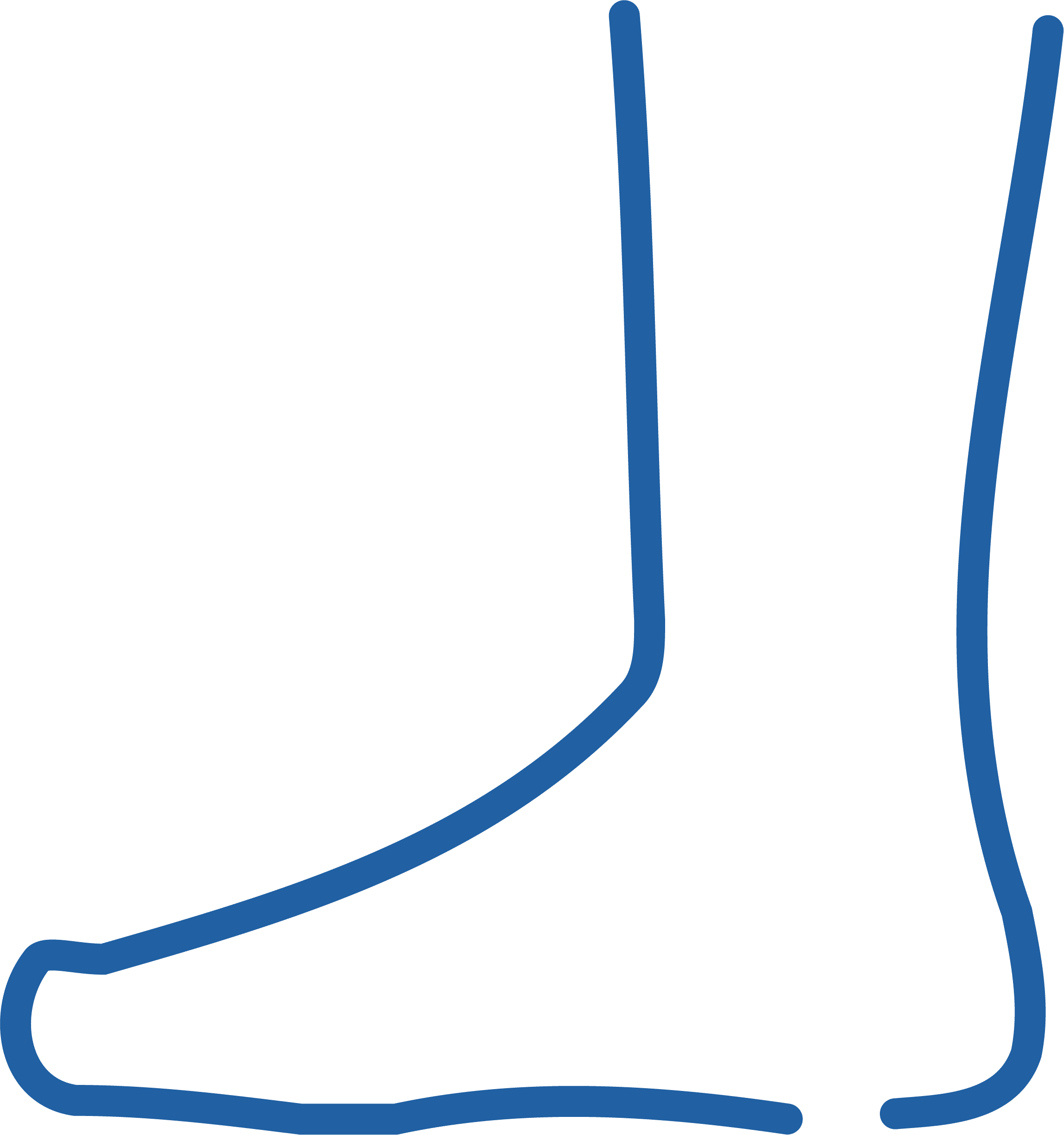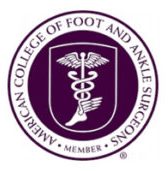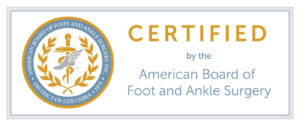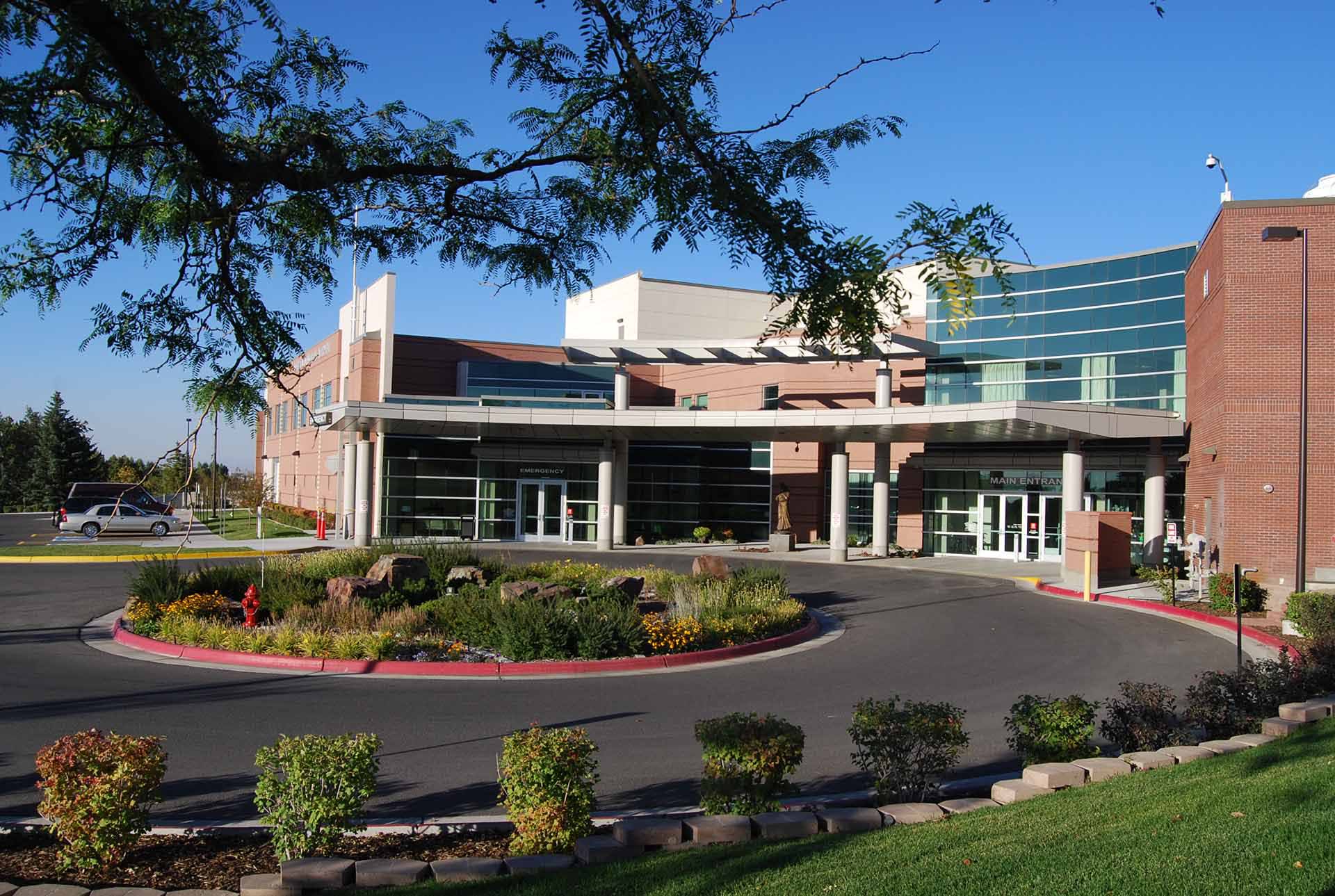Madison Foot and Ankle
Our Specialties and Treatments

Podiatry

Total Ankle and Foot Replacement
Meet Our Madison Foot and Ankle Providers

Eric E. Barton, DPM
Podiatry
Sports Medicine
Surgery

Jordan W. Crafton, DPM
Total Foot and Ankle Replacement
Podiatry
Sports Medicine
Surgery
Dr. Jordan Crafton with Madison Foot and Ankle
Other Services
Achilles tendon conditions
The Achilles tendon can be affected by a number of issues, including tendonitis, tendinosis, peritendonitis, rupture, and retrocalcaneobursitis. Some factors that can increase the risk of Achilles tendon injury include wearing high heels, having flat feet, having tight leg muscles or tendons, having bone spurs, adding time or intensity to an exercise routine, wearing shoes that don’t fit well, working out on uneven surfaces, and taking certain medications.
Ankle sprains
An ankle sprain occurs when the ligaments in your ankle are stretched or torn, usually due to a sudden movement or twist. Symptoms may include pain, swelling, limited range of motion, tenderness, bruising, itching, cold or numb feet, and stiffness. Common causes of ankle sprains include falling and twisting your ankle, landing awkwardly after jumping or pivoting, walking or exercising on an uneven surface, and being stepped on by another person during a sports activity. The severity of a sprained ankle can range from a small tear to a full rupture, and the time it takes to recover depends on the severity.
Athletes foot
Athlete’s foot, also known as tinea pedis, is a common fungal infection of the feet that can cause itching, burning, redness, scaling, and cracking. The fungus can also cause the skin to thicken, turn white, and become slightly swollen. In rare cases, the skin may blister. Athlete’s foot is most commonly found between the toes, but it can affect any part of the foot. It can also spread to the toenails, causing them to appear thick and cloudy yellow. Athlete’s foot is caused by a fungus that thrives in warm, moist areas. Risk factors include wearing closed shoes, especially plastic-lined shoes, keeping feet wet for long periods, sweating a lot, having a minor skin or nail injury, sharing mats, rugs, bed linens, clothes, or shoes with someone who has a fungal infection, and walking barefoot in public areas like locker rooms, saunas, swimming pools, and communal baths and showers.
Arthritis
Arthritis is a general term for joint inflammation that can affect one or more joints. Symptoms include pain, especially during or after movement, stiffness, especially when waking up or after being inactive, tenderness when applying light pressure to the joint, loss of flexibility, a grating sensation, bone spurs, swelling, redness and warmth, and a decreased range of motion.
Bone spurs
Bone spurs, also known as osteophytes, are bony growths that can develop on the surface of bones, often around joints or in the spine. They can cause pain, stiffness, or limited motion, but they often don’t cause any symptoms and may go unnoticed for years. Bone spurs can develop in response to arthritis (the most common cause of bone spurs is joint damage from osteoarthritis), aging (as cartilage wears down, ligaments loosen and the body thickens them to hold bones together), pressure, rubbing, or stress (bone spurs can form in response to long-term stress, pressure, or rubbing). Bone spurs can be a problem if they press on nerves, tendons, or other structures in the body. Symptoms include pain in the affected joint, pain or stiffness when moving the joint, weakness, numbness, or tingling in the arms or legs, muscle spasms, cramps, or weakness, bumps under the skin, especially in the hands and fingers, and trouble controlling the bladder or bowels.
Bunions
A bunion is a foot deformity that causes a bony bump to form on the joint at the base of the big toe. It occurs when the big toe leans toward the other toes, and the bones in the front of the foot move out of place. Bunions can be caused by a number of factors, including genetics, shoes that are too tight, bone abnormalities, and age or weight gain. Symptoms of a bunion include a bony bump at the base of the big toe, red, thickened skin at the base of the big toe, pain over the joint, and difficulty wearing regular shoes.
Circulation problems
Poor circulation in the feet can be caused by a number of factors, including peripheral artery disease (PAD), diabetes, obesity, smoking, and vasculitis (inflammation in the blood vessels).
Corns/calluses
Corns and calluses are thickened areas of skin on the feet that are caused by friction or pressure. They can be painful, but are usually not serious. Corns are smaller and deeper than calluses, and have a hard center surrounded by swollen skin. They can be painful when pressed. Corns often form on the top of the toes or between the toes. Poorly fitting shoes are a common cause of corns. Calluses are often larger than corns and are rarely painful. They tend to develop on pressure spots, such as the heels, balls of the feet, palms, and knees. Calluses can develop from wearing high heels, uncomfortable shoes, or shoes that are the wrong size.
Diabetic ulcers and wounds
Diabetic ulcers are a serious complication of diabetes that can occur when a wound doesn’t heal properly due to poor circulation, nerve damage, and increased risk of infection. They are open sores that can appear on the feet. Some factors that can contribute to the development of diabetic ulcers include poor circulation, nerve damage (neuropathy, which can lead to numbness in the feet, making it difficult to notice an injury and seek treatment), and increased risk of infection. An estimated quarter of people with diabetes will develop a foot ulcer at some point, and a quarter of those with ulcers may end up needing an amputation.
Flat feet
Flat feet, also known as fallen arches or pes planus, is a postural deformity that occurs when the arches of the foot collapse and the sole of the foot touches the ground. Flat feet can be caused by reduced infantile foot development, injury, aging, and hereditary conditions including Ehlers-Danlos Syndrome and Marfan Syndrome. Flat feet usually don’t cause problems and don’t need to be treated. However, you should see a Madisonhealth doctor if you have flat feet and experience pain, stiffness, weakness, or numbness in your feet, pain in your lower legs or ankles, calluses on your feet, feet that lean toward each other, or problems with walking or running.
Foot deformities
Foot deformities are conditions that affect the structure or function of the foot, and can be present at birth or develop later in life. They can be caused by abnormalities in the bones or tendons of the foot or toes. Some common foot deformities include bunions (also known as Hallux Valgus, bunions can be very painful), hammertoe (usually affects the second toe, causing the joint to bend in a “hammer” shape), flatfoot (also known as pes planus, flatfoot is a condition where the arch of the foot flattens), high arches (also known as pes cavus, high arches occur when the sole of the foot is raised or hollow while bearing weight), clubfoot (a congenital foot deformity), and tarsal coalition (a deformity that develops in children and teenagers, causing the tarsal bones to fuse together, reducing flexibility and movement). Foot deformities can cause mobility issues, which can lead to weakness, weight gain, or heart conditions. They can also cause pain, affect the way you walk, and lead to calluses and pressure sores. It’s important to see your Madisonhealth provider for an evaluation and proper treatment.
Fractures
A foot fracture can cause a variety of symptoms, including pain, swelling, bruising, tenderness, deformity, difficulty walking, and open fracture (bone sticking through the skin). Foot fractures can be caused by falls, twisting, or direct impact. If you think you have a broken foot, you should see a doctor as soon as possible. In the meantime, you can try these first aid steps: Apply ice to reduce swelling, Elevate your foot, Limit weight bearing, and Lightly wrap your foot in a soft compressive dressing.
Fungal nails
A fungal nail infection, also known as onychomycosis, is a common infection that can cause a nail to become discolored, brittle, and thickened. It usually starts at the edge of the nail and can spread to the entire nail. Symptoms of a fungal nail infection include a white or yellow-brown spot under the tip of the nail, a change in the nail’s shape, crumbling of the nail’s edges, debris trapped under the nail, loosening or lifting of the nail, loss of shine, and white or yellow streaks on the side of the nail.
Gout
Gout is a type of arthritis that causes sudden and severe pain and swelling in the joints. Gout is caused by a buildup of uric acid in the body, which can form crystals in the joints. These crystals trigger inflammation and pain. Symptoms include severe pain in one or more joints, the joint feeling hot and tender, swelling in and around the affected joint, red, shiny skin over the affected joint, discoloration or redness, stiffness, and warmth.
Hammertoes
Hammer toe is a toe deformity that causes the toe to bend downward at the middle joint, resembling the shape of a hammer. It can affect the second, third, fourth, or fifth toe. Hammer toe can be caused by wearing tight shoes, wearing high heels, and wearing shoes that are outgrown. Symptoms of hammer toe include, pain when walking, pain when stretching or moving the toe, calluses on the sole of the foot, and corns on the top of the toe.
Heel pain
Heel pain is a common foot and ankle problem that can have many causes, including plantar fasciitis, poor biomechanics, abnormal walking patterns, shoes that don’t fit properly, injuries, or other conditions such as bursitis, bone spurs, Achilles tendinitis, or nerve enlargement. Obesity can also put extra stress on the plantar fascia.
Ingrown toenails
An ingrown toenail, also known as onychocryptosis, is a common and painful condition that occurs when the nail grows into the skin around it. It can affect any toenail, but is most common in the big toe. Symptoms of an ingrown toenail include redness, swelling, and tenderness, pain when pressure is applied to the toe, inflammation of the skin at the end of the toe, fluid build-up around the toe, skin overgrowth around the toe, bleeding, and pus from the affected area. Some things that can increase the risk of an ingrown toenail include wearing tight or short shoes, trimming toenails too short, especially on the sides of the big toe, and cutting toenails so that the corners taper and curve with the toe.
Joint pain
Joint pain can have many causes, including injuries, conditions, and diseases. Osteoarthritis: A common type of arthritis that occurs as cartilage wears away over time, usually after age 45. It’s also known as “wear-and-tear arthritis”. Rheumatoid arthritis: An autoimmune disease that causes joint pain, swelling, and sometimes deformation, usually in the fingers and wrists. Gout: A painful condition that occurs when acidic crystals build up in a joint, usually in the big toe. Bursitis: Inflammation of the fluid-filled sacs that cushion joints. Injuries: Such as tendon injuries, ligament injuries, fractures, strains, or sprains. Infections: Such as hepatitis C or septic arthritis (a joint infection). Autoimmune diseases: Such as lupus, which can cause muscle and joint pain. Viral infections: Some infections can cause joint pain. Medication: An allergic reaction to medication can cause joint pain.
Neuromas
Morton’s neuroma is a common foot problem that causes pain in the ball of the foot, usually between the third and fourth toes. Symptoms include a burning, sharp, or shooting pain in the ball of the foot that can spread to the toes, a feeling of a pebble or marble under the foot, numbness or tingling in the toes, pain that worsens when wearing tight shoes or high heels, pain that increases with weight-bearing activities like walking or running, pain that gets worse over time, and finding that removing shoes and rubbing the foot can help relieve pain.
Nerve entrapment
Nerve entrapment, also known as nerve compression syndrome, is a medical condition that occurs when a nerve is compressed or trapped between two other structures in the body. This can happen due to a number of causes, including trauma or injury, repetitive or overuse activity, prior fractures or dislocations, scar tissue, bone spurs or arthritis, swelling or edema, cysts, and systemic conditions, such as diabetes. Nerve entrapment can lead to inflammation, nerve pain, and nerve damage. If the pressure on the nerve is only short-term, nerve function usually returns once the pressure is relieved. However, if the pressure continues, chronic pain and permanent nerve damage can occur.
Nerve pain
Nerve pain, also known as neuropathic pain, is a type of chronic pain that can feel like a sharp, stabbing, or burning sensation. It’s caused by damage or disease to the nervous system, which can be due to a number of factors, including injuries (nerve pain can be caused by injuries to the nerves that signal pain to the brain, or to the brain itself), medications (some medications, such as chemotherapies and certain HIV drugs, can cause nerve pain), toxic substances (lead, arsenic, and mercury can all damage nerves), alcohol, and other conditions (diabetes, shingles, cancer, and vitamin B-12 deficiency). Other symptoms of nerve pain include tingling or numbness in the hands and feet, loss of balance, extreme sensitivity to touch, muscle weakness, and a heavy feeling in the arms and legs.
Neuropathy
Neuropathy, also known as peripheral neuropathy, is a nerve damage condition that can cause pain, numbness, tingling, swelling, or muscle weakness. It can affect the hands or feet and worsen over time. Neuropathy can be caused by a number of things, including cancer or cancer treatment, physical injury, infection, toxic substances, diabetes, kidney failure, malnutrition, shingles, and autoimmune disease. There are more than 100 types of neuropathy, each with its own symptoms and prognosis. Some types of neuropathy include sensory neuropathy (damage to nerves that carry sensations like touch, temperature, and pain), motor neuropathy (damage to nerves that control movement), autonomic neuropathy (damage to nerves that control bodily functions like digestion, bladder function, and blood pressure), and mononeuropathy (damage to a single nerve outside the central nervous system). While there is no known cure for neuropathy, your Madisonhealth provider can help you manage the condition to improve your symptoms.
Pediatric foot conditions
Children can experience many foot conditions, including clubfoot, flatfoot (also known as “fallen arches”, this condition occurs when the arch of the foot collapses or isn’t formed properly. It can lead to pain and difficulty walking), cavus foot (also known as a high arch, this condition occurs when the arch of the foot is more arched than normal), ingrown toenails, plantar warts, athlete’s foot, and tarsal coalition (an abnormal connection of two or more bones in the foot, which can result in a severe, rigid flatfoot). Early detection and treatment are important for children’s healthy foot development. Children’s feet are still malleable and growing, so they can be molded into shape during growth to avoid potential problems later on.
Plantar fasciitis
Plantar fasciitis is a condition that causes inflammation of the plantar fascia, a band of tissue that runs from the heel to the toes and supports the arch of the foot. The main symptom is heel pain, which is usually worst in the morning or after resting. Other symptoms include pain on the bottom of the foot, stiffness or tightness in the arch or Achilles tendon, and mild foot swelling or redness. Plantar fasciitis can be caused by a number of factors, including foot structure, type of shoes, overuse, walking surfaces, being overweight, having a job that requires a lot of walking or standing on hard surfaces, having tight calf muscles, or having very flat feet or very high arches.
Shin splints
Shin splints, also known as medial tibial stress syndrome, is a condition that causes pain and tenderness in the front or inside of the shin. It’s usually caused by repetitive or intense exercise, such as running, dancing, or gymnasts. Symptoms of shin splints include a dull or aching pain in the front of one or both shins, pain that worsens during or after exercise, pain that improves with rest, and pain when you push on your shins.
Skin disorders
There are many skin disorders, including acne, alopecia areata (a condition that causes hair loss in small patches), atopic dermatitis or eczema (a condition that causes dry, itchy skin that can lead to swelling, cracking, or scaliness), psoriasis (a condition that causes scaly, itchy, and dry plaques), Raynaud’s phenomenon (a condition that causes periodic reduced blood flow to the fingers, toes, or other body parts, causing numbness or skin color change), rosacea (a condition that causes flushed, thick skin and pimples, usually on the face), vitiligo (a condition that causes patches of skin to become white), melanoma (a type of skin cancer that forms in the cells that produce skin color), Merkel cell carcinoma (a rare, aggressive form of skin cancer that usually affects sun-exposed areas of the body), and lupus( an autoimmune condition that can affect many parts of the body, including the skin). Skin conditions can be caused by allergies, irritants, genetic makeup, certain diseases, and immune system problems.
Sports-related conditions and injuries
Common sports injuries include sprains, strains, fractures, dislocations, bruises, and muscle injuries. Ankle sprain and Achilles tendinitis are particularly frequent.
Tarsal tunnel syndrome
Tarsal tunnel syndrome (TTS) is a foot condition that occurs when the tibial nerve in the ankle is compressed, causing pain, numbness, tingling, or weakness in the foot. The tarsal tunnel is a passageway in the ankle formed by the ankle bones and ligaments. Symptoms of TTS can include shooting pain, numbness, tingling or burning sensation in the foot, and weakness or muscle damage in the bottom of the foot. TTS can be caused by a number of things, including flat feet or fallen arches, swelling from an ankle sprain, diseases like arthritis or diabetes, a varicose vein, ganglion cyst, swollen tendon, or bone spur, and repetitive stress activities like running or excessive walking or standing.
Tendonitis
Tendonitis is a condition that occurs when a tendon, the tissue that connects muscles to bones, becomes inflamed and swollen. It can cause pain, stiffness, and discomfort in the joint, and affect how the tendon moves. Tendonitis can occur in any tendon in the body, but it’s commonly seen in the Achilles tendon, among other areas. It’s often caused by repetitive activities. Achilles tendonitis causes pain at the back of the heel or 2 to 4 inches above the heel, when the Achilles tendon becomes inflamed, swollen, and irritated. Symptoms include pain and stiffness in the morning, pain when walking or running, and difficulty standing on your toes. Tendonitis from overuse is common in younger people, while tendonitis from arthritis is more common in older adults.
Toenail problems
There are many common toenail problems, including fungal infections (Also known as onychomycosis, this is a common condition that can be caused by wearing heavy socks, walking barefoot on wet surfaces, or having diabetes. Toenails may appear yellow or have a black hue.); ingrown toenails (This is one of the most common and painful toenail problems, and can be caused by improper trimming, tight shoes, or heredity.); trauma (Injuries to the toenail can cause pain, swelling, and a red or purple bruise under the nail. The nail may split, tear, thicken, or lift off the nail bed.); discoloration (White marks, known as leukonychia, can appear after minor injuries. Yellowing can also be a side effect of diabetes, liver disease, or smoking.); thickened toenails (Also known as onychauxis, this can be caused by age, trauma, and fungus.); nail shedding (Also known as onychoptosis or onychomadesis.); and, nail lifting (Also known as onycholysis.). Toenail irritation can also be caused by wearing shoes that are too tight, cutting your toenails too short, or being exposed to high heat and moisture.
Tumors
Foot tumors can be benign or malignant, and can include a variety of types, such as enchondroma (A benign tumor that arises from cartilage and is most common in the small bones of the foot, such as the phalanges and metatarsals. Enchondromas are often asymptomatic and are usually found incidentally on X-rays.); plantar fibroma (A tumor that causes pain on the bottom of the foot, usually in the arch. Pain is often first noticed when wearing shoes that put pressure on the tumor.); lipoma (A noncancerous soft tissue growth that is usually found just below the skin, often on the bottom of the foot. Lipomas are usually small and feel rubbery.); and, ganglion cyst (A soft, gel-like mass that is the most common type of swelling in the foot. Ganglion cysts are smooth and round, and are usually harmless.). Although foot tumors tend to produce symptoms early, many are initially misdiagnosed. Malignant foot tumors are rare, but pose a serious health risk if left untreated. It’s important to investigate any foot mass, even if it seems indolent.
Ulcers and wounds
Foot ulcers and wounds can be open sores or lesions that don’t heal or keep coming back. They can be caused by a number of things, including diabetes (Foot ulcers can be a complication of diabetes, particularly neuropathy, which can cause loss of feeling in the feet. About 15% of people with diabetes will develop a foot ulcer.); poor circulation (Arterial ulcers can affect people with poor circulation, high blood pressure, diabetes, or who smoke.); and, varicose veins (Venous ulcers are the most common type of foot ulcer and usually affect people with varicose veins or deep vein clots.). Symptoms of foot ulcers include swelling, burning, pain, drainage, unusual redness or irritation, odor, and black tissue around the wound.
Warts
Foot warts, also known as plantar warts, are skin growths caused by the human papillomavirus (HPV) that appear on the bottom of the foot or toes. Plantar warts are usually the same color as the skin, but may have small black dots on the surface. They can appear as a small, round area of rough or thickened skin, but can grow to larger areas. Plantar warts can be painful when pressure is applied, such as when walking. The virus enters the skin through small cuts, breaks, or weak spots on the bottom of the foot. Plantar warts can spread to other parts of the body by touching them, or by sharing towels, razors, or other personal items. The strain of HPV that causes plantar warts is not highly contagious, but the virus thrives in warm, wet environments. In children, warts often go away on their own, but in adults they tend to stay.




